For just over twenty years, the tower of the National Archives at 2–4 Bécsi kapu Square was an integral part of the Buda cityscape. In 1945 the building suffered such severe damage that it could not be saved. However, soon the tower, inspired by the medieval Royal Palace of Buda, will be rebuilt within the framework of the National Hauszmann Program.
The history of the National Archives as an institution dates back to the 18th century. The predecessor of the present-day archives, the Archivum Regni, was founded in Pozsony (today Bratislava, Slovakia) in 1756. It was housed in the building of the Hungarian National Diet in the city, from where it was moved to the former Nunnery of the Poor Clares in Buda in 1784. The building was too small for the institution from the get-go, and unsurprisingly the situation quickly became untenable.
The idea to construct a purpose-built structure for the Hungarian Royal National Archives first arose in 1874. However, implementation of the plans took a long time. Also, it required decades of lobbying from the Head of the National Archives Gyula Pauler, who sadly never saw the realisation of his goal.
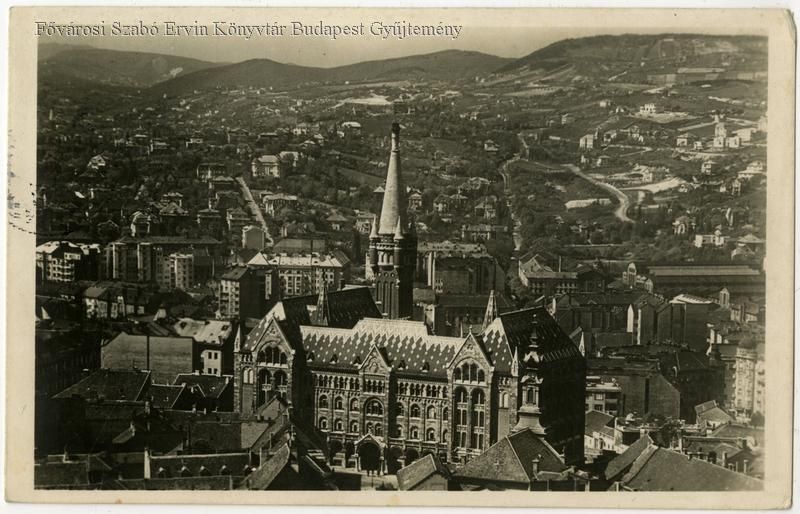
Postcard of the National Archives in the 1930s (Photo: FSZEK Budapest Collection)
As noted in the article published on the National Archives' website by Chief Archiver Csaba T. Reisz, once the support of the Minister of Finance, was secured in the late 1890s, after that of the Prime Minister and the Minister of the Interior had been confirmed, the university professor, Samu Pecz was commissioned to create the plans for the National Archives. Pecz created a building with historicising ornaments both internally and externally but equipped with the most modern equipment of the age.
Although the architect completed the initial plans in 1899, the future of an independent archive was repeatedly drawn into doubt. For a while, the ideal construction site was not found. A final decision was reached in 1911, and construction began in 1913 on Bécsi kapu Square in Buda Castle. Construction was originally planned to be completed in 1916, but due to the First World War and a lack of funds, the building was only completed in 1918.
During the Horthy era, which brought political consolidation following the revolutions, promoting culture was a priority, especially during Count Kuno Klebersberg's time in office as Minister for Culture. During his term, the National Archives' interior received stunning decorations, because of which many call the building the palace of the National Archives.
The palace is decorated with, among others, windows by Miksa Róth, frescoes by Andor Dudits and statues by Zsigmond Kisfaludi Strobl. Representational areas and research rooms are located in the central wing of the “E”-shaped building, while the archives themselves can be found in the wings on each end.
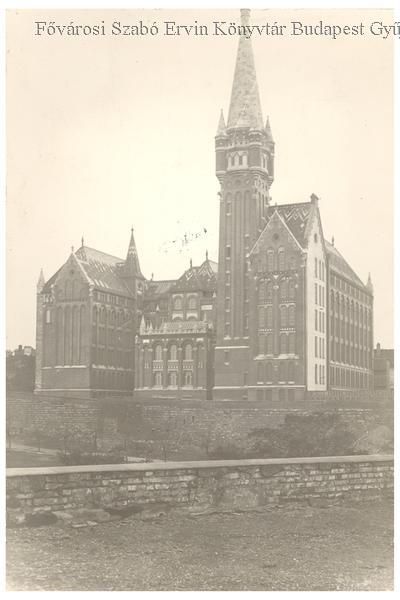
The roof was covered with Zsolnay roof tiles. Picture taken after 1918 (Photo: FSZEK Budapest Collection)
The 75-metre-tall tower connected to the buildings western wing was an integral part of the palace. The architect, Samu Pecz, used the tower to hide the chimney of the boiler room needed to heat the building, as well as tanks to store water in case of a fire. He attempted to recreate the István Tower of the mediaeval Royal Palace of Buda Castle in the top of the tower.
Nevertheless, the tower was divisive even before construction. Before construction began in 1912, a board was set up to supervise and oversee the work. The minutes of the first meeting of the board on 28–29 August 1912 report that there was a debate among its members about the tower. The Minister of Trade objected to the tower's aesthetic value and practicality. He stated that the water tanks could be placed in the cellars, from where pumps could draw the water to a possible fire when needed. The Minister was seconded in his opinion by the Budapest Firefighting Chief and a ministerial councillor.
The architect Samu Pecz and Alajos Hauszmann, the project's designated technical expert, supported tower's construction. Hauszmann pointed out that pumps could say malfunction, but if the tanks were in the tower, the laws of physics would do their job. Furthermore, the tower could make the massive structure of the building appear loftier. The board members eventually voted 50–50 on the issue; thus, the decision to build the tower was eventually made by the Prime Minister.
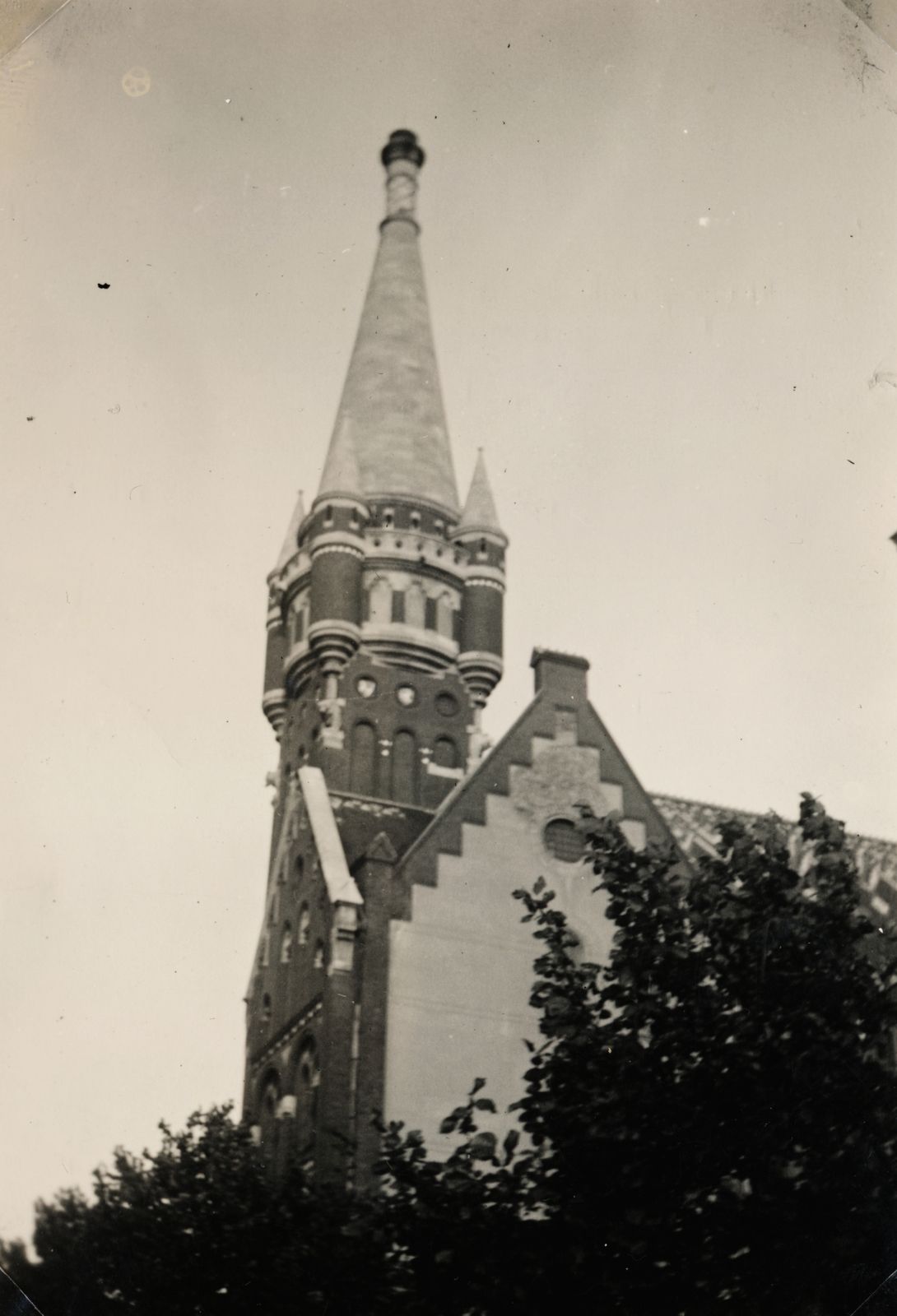
The István Tower of the Royal Palace of Buda Castle inspired the tower that hid the chimney of the National Archives
(Photo: Fortepan/No.: 158265)
Although Samu Pecz would have placed water tanks in the tower, these were never installed. As the First World War broke out during construction and subsequent turmoil (Aster Revolution, Council Republic, Trianon) hindered the sourcing of building materials significantly. At the same time, the sharp increase in inflation led to rising prices – as noted in the article "Levéltári toronyóra – Pogány Móric tervei az Országos Levéltár új tornyára” ('Clock tower for the Archives – Plans by Móric Pogány for a new tower for the National Archives') by Csaba T. Reisz. As Pecz himself reported at a meeting of the board held on 13 April 1918, “due to the lack of available material, tile paint, enamel, asphalt and glass, the water tanks and pumps needed for the tower cannot be installed”, – read the minutes of the meeting.
Following the stabilisation of the Horthy system, the architect repeatedly lobbied the government, especially the Minister of Interior, to provide funds for constructing the building's water tanks. However, in the above-mentioned article, Csaba T. Reisz notes that what would have cost 80,000 Crowns before the war, would have cost 1,450,000 crowns in the early 1920s due to inflation. Finally, the item was included in the draft budget, but a representative of the Ministry of Finance later deleted it.
As mentioned above, Count Kuno Klebelsberg, Minister for Religion and Public Education dod a lot to support the National Archives. Nevertheless, he was also dissatisfied with the tower, especially its top. This is why in a ministerial decree from 1928, Klebelsberg commissioned architect Móric Pogány to redesign the top of the tower.
Pogány was also offered the help of Professor Károly Nagy, who had previously helped Samu Pecz with the construction of the National Archives, and continued his work after Pecz passed away in 1922. Móric Pogány completed the requested plans for the modification of the tower in less than a year.
The plans were submitted to the Ministry of Religion and Public Education at the end of 1929 and were approved on 28 January 1930. Pogány would have modified the tower with a loftier peak, adding clocks to its four sides. However, the Great Depression reached Hungary. Suddenly the financial situation was so dire that not only were there no funds to complete the redesign, but the state could barely afford the first 8000 Pengő instalment of Pengő's pay.
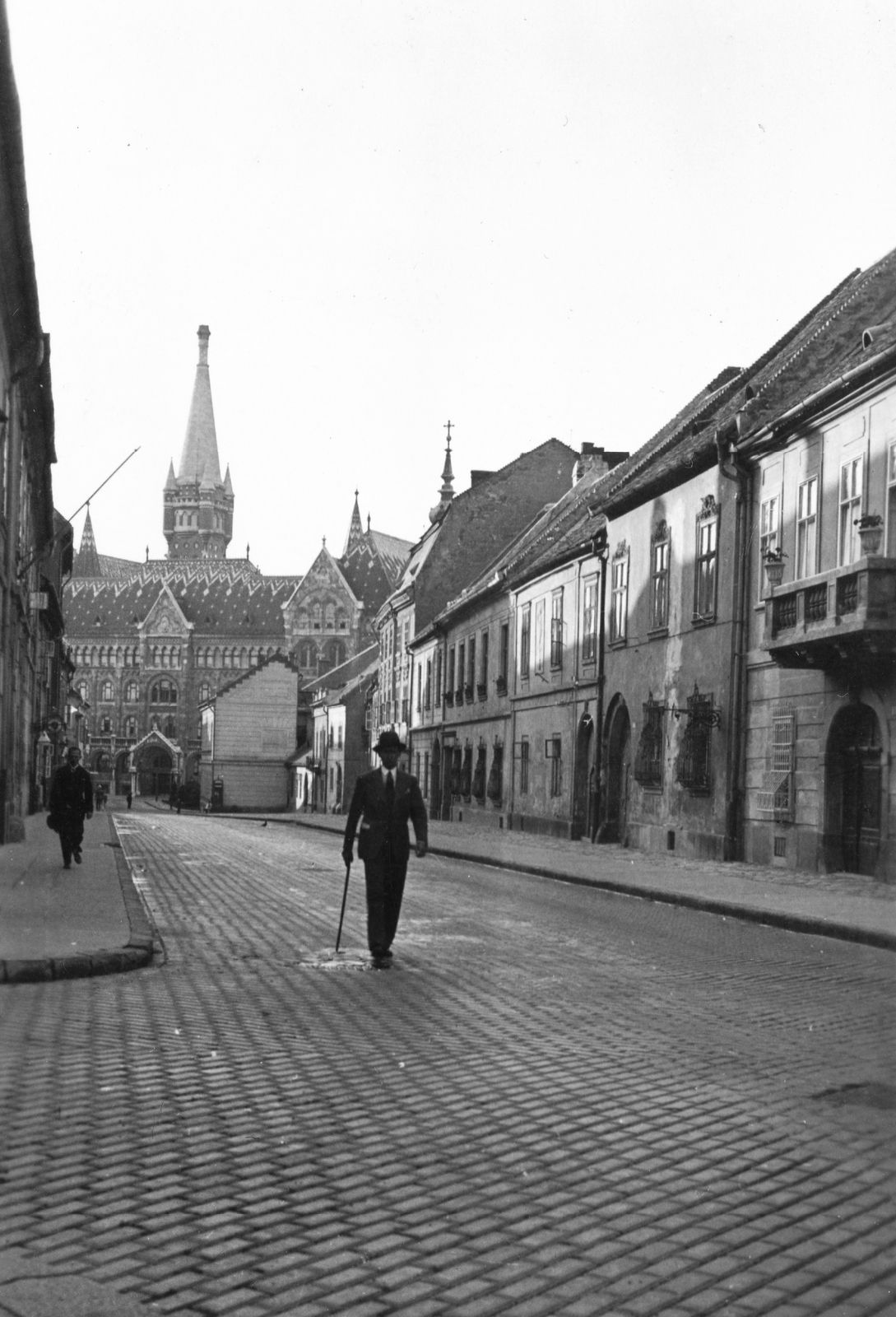
The National Archives from Fortuna Street in 1932 (Photo: Fortepan/No.: 84739)
While many people were not in love with the tower's design, or even existence, there is little doubt that it was an unavoidable element of the cityscape. In 1925 Magyar Radio requested that antennas be installed on the tower as it was the only possible location to ensure a radio connection with America. However, Dezső Csánki, Director of the National Archives, opposed the idea and they were not installed. Five years later, in 1930, the Budapest electricity company contacted the Director to offer to create a decorative illumination for the tower, but Csánki rejected this offer as well.
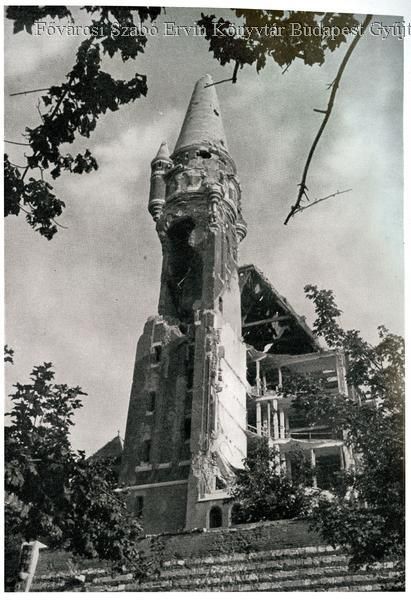
The tower was severely damaged in 1945 (Photo: FSZEK Budapest Collection)
The building of the National Archives suffered major damage during the siege of Budapest as it was in one of the city's hotspots. The building was hit by bombs twice: first on 25 January 1945 and then on 12 February. In addition to the damage to the building, 3100 linear running metres of documents were destroyed. Restoring the tower would have cost so much that it was demolished.
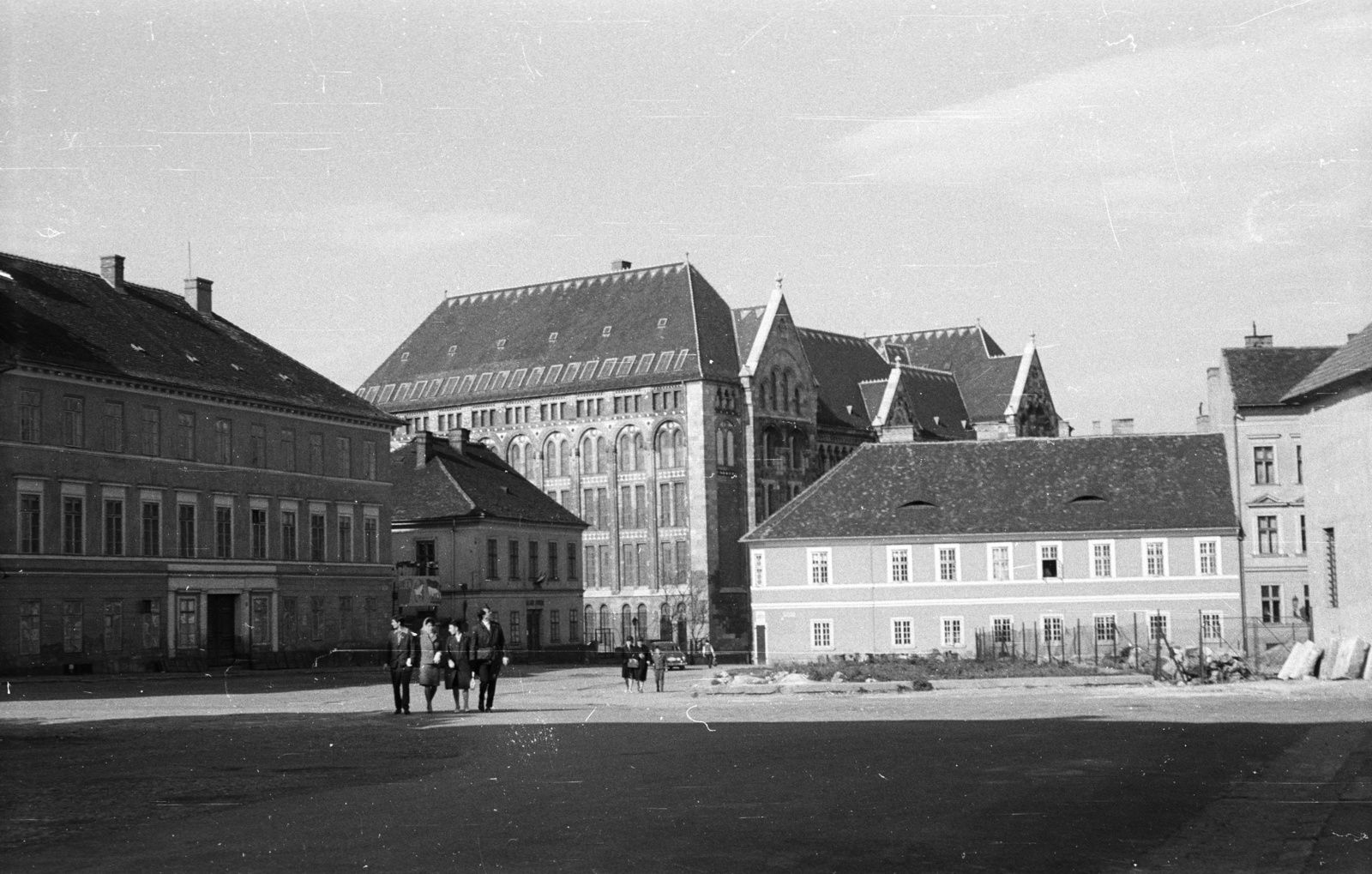
The building of the National Archives without its tower, dotted with attic windows in 1964, seen from Kapisztrán Square
(Photo: Fortepan/No.: 50723)
Last week, the National Hauszmann Program, which is tasked with the renewal of Buda Castle, announced that the tower of the National Archives Tower would be rebuilt, and an uncompleted wing, which was part of the original plans would also be added to the building. The new wing will house a visitors' centre of the archived, while the tower will function as a lookout.
Cover photo: The building of the Hungarian National Archives in 1933 (Photo: FSZEK Budapest Collection)

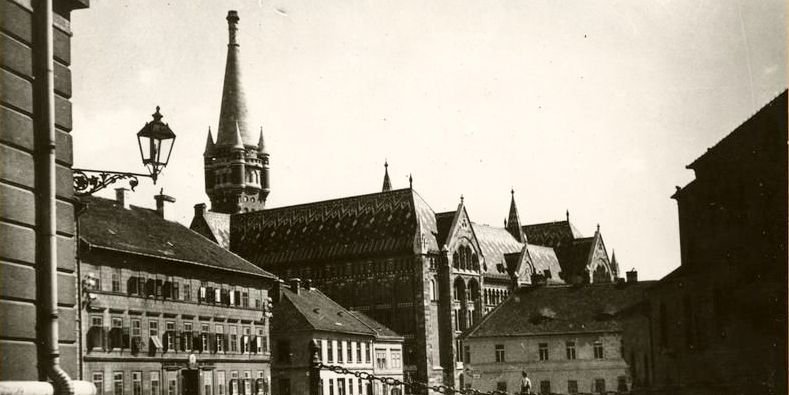



































Hozzászólások
Log in or register to comment!
Login Registration